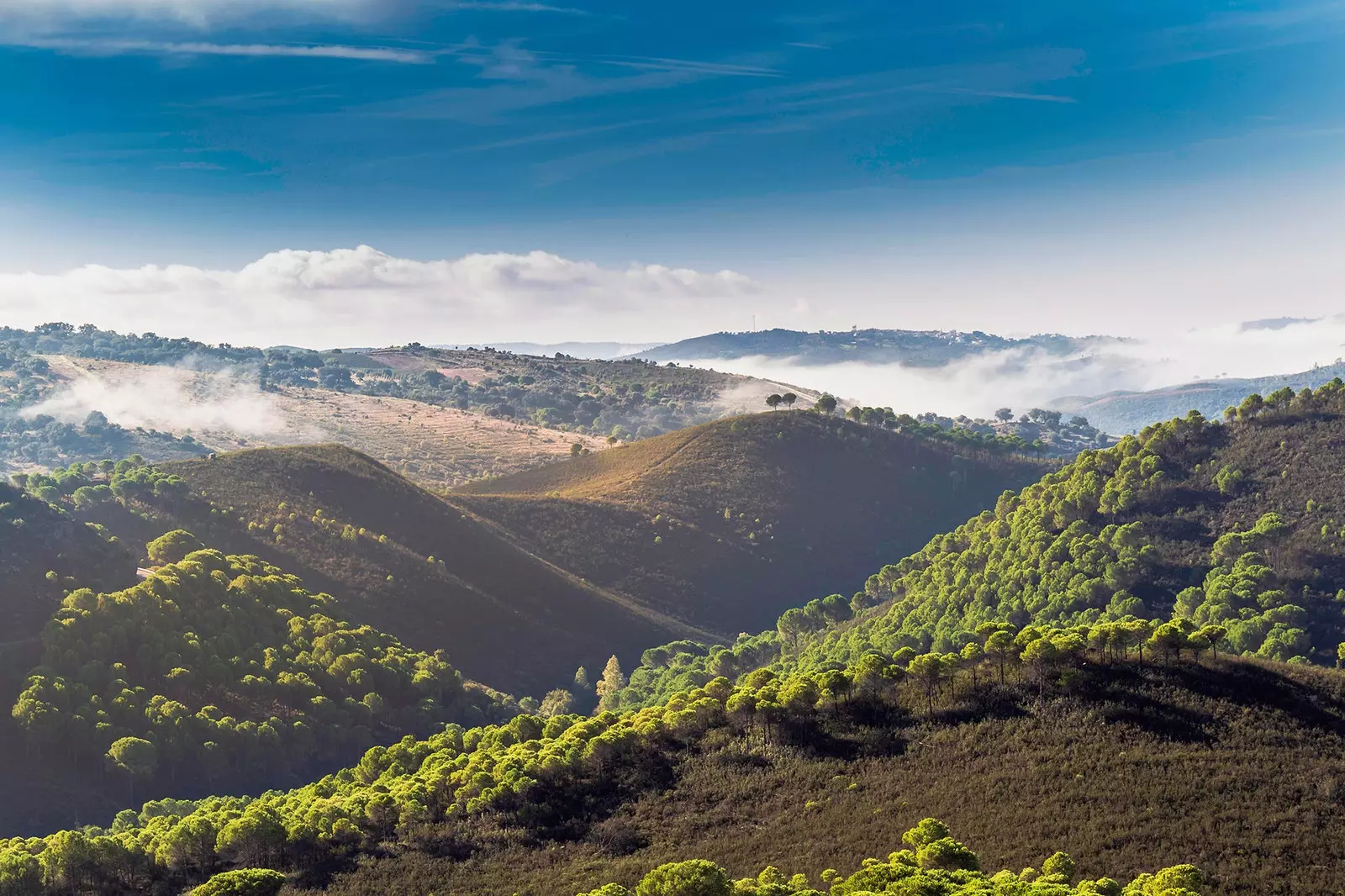
Sierra de Huelva, an Andalusian dream
As if it were the beginning of an epic, to reach the Sierra de Huelva it is necessary to follow the course of a river of red waters. Pass under the arches of the Niebla Roman Bridge and, as the river becomes young, you will see yourself little by little surrounded by mountains.
Around the Solomon Bridge, Already inside the Sierra, you will think you are on Mars instead of Andalusia, or in the middle of the desert of Tatooine, the isolated planet of Star Wars.
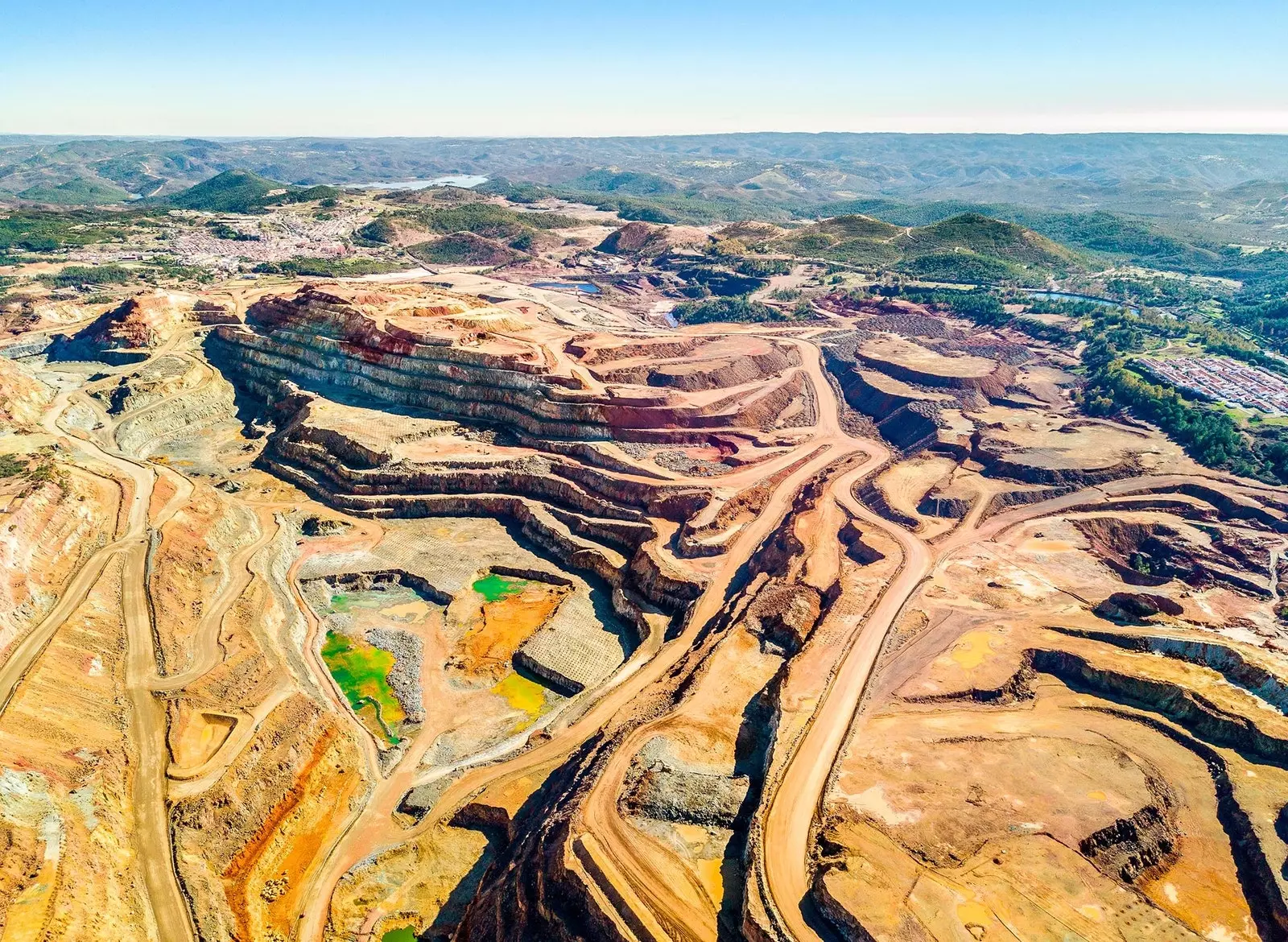
Aerial view of the Riotinto mines
The suspicious tones of the red river, caused by the minerals dragged by its waters, they will not invite you to bathe despite the prevailing heat and you will want to reach your destination to relieve your throat. They had promised you shade, ham, water and forests: but all around you feel a Martian silence that impresses the most traveled.
The dream that you were chasing behind the oaks of the mountains begins as a nightmare. The scarlet waters of the Tinto River give way to an apocalyptic terrain in which the continuous vibration of the cranes and machine engines can be distinguished. Trucks with wheels as big as a single car appear crossing a bare saw, with no more life than the one that walks underground, in search of the mineral that made this region famous.
The Riotinto mines They have been excavated by Tartessians, Phoenicians, Romans, Arabs, Castilians and English, the latter being the ones who left the greatest mark on the neighboring towns. Both the city of Huelva and Riotinto have an English neighborhood where we can find Victorian-style houses surrounded by holm oaks that can never be seen in England, and whose high ceilings designed to stop the rain have little to do under the Andalusian sun. There remain, however, the houses of the English, to remind those who go through the desolation of Riotinto who were their owners.
The view of the mines from the viewpoint prepared for it is overwhelming, because the quarries are of a colossal dimension and the landscape is so damaged by human action that we will soon feel like part of a post-apocalyptic movie set. The fires that punish the mountains every summer do not help to improve it and, when leaving Rio Tinto, many will think that the Sierra de Huelva is far from being the promised Eden. Wait and see; after the mines, you will find the valley of Aracena.
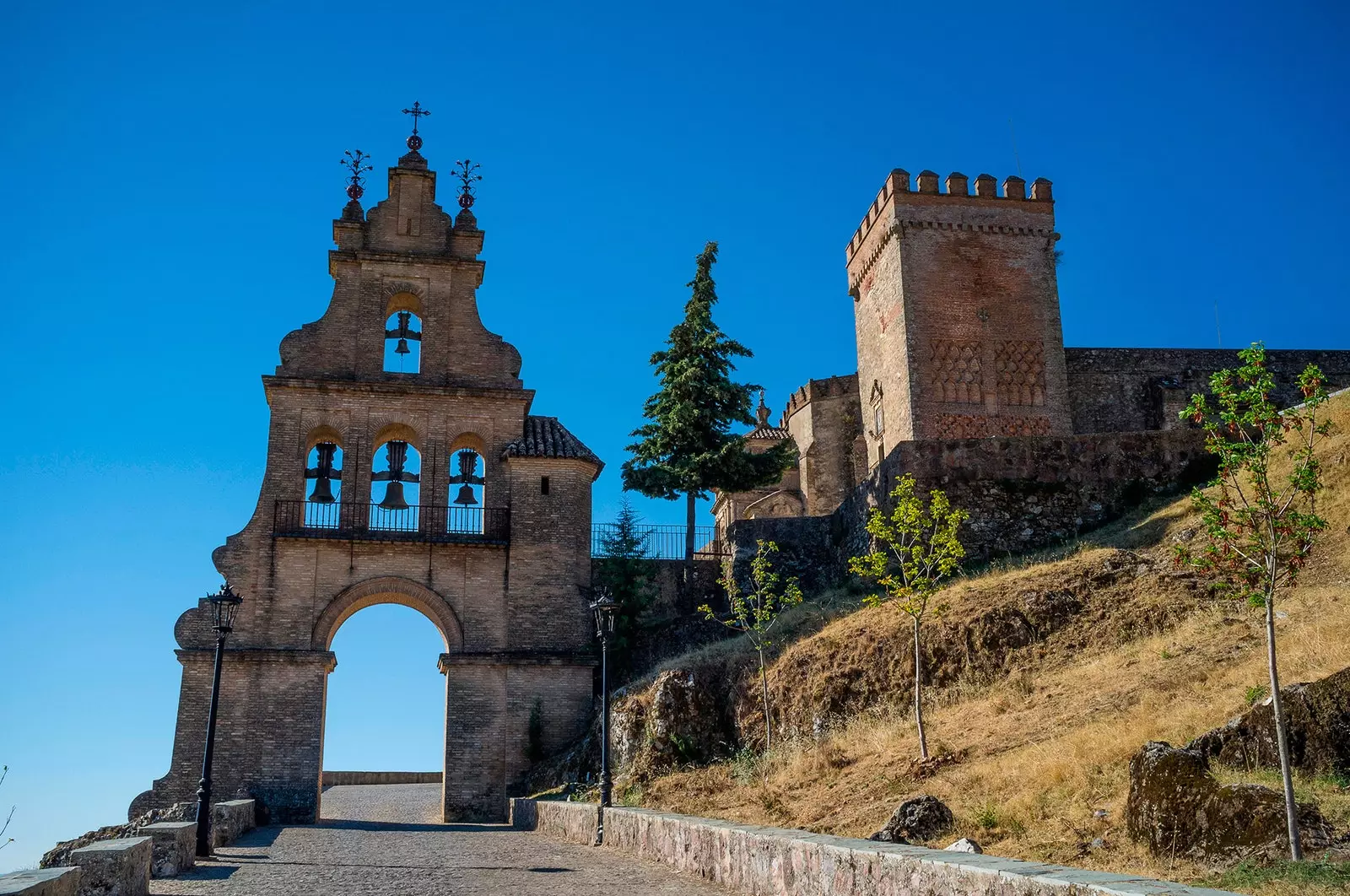
Entrance to the castle of Aracena
Legend has it that the mudejar castle located at the top of Aracena witnessed a magical event. A Castilian nobleman, in love with the daughter of the Muslim qadi, tried to kidnap the maiden taking advantage of the darkness of the night. The guards discovered him, and the captor, with the girl on his back, sought refuge in a grotto that opened at the foot of the castle. There he hid the lady, and he himself tried to confront the guards until he was killed in action. When the Muslims entered the cave, wishing to free the maiden from him, they found that the rock cried and thousands of droplets fell from the ceiling through stone spines as long as swords. They never found the Muslim maiden, only a stone in the shape of a kneeling girl.
The cavern where the legend takes place is none other than the Cave of Wonders of Aracena, and the stalagmite in the shape of a woman belongs to the many that adorn the room called Cathedral. The cave continues to mourn the death of the princess, giving the visitor a spectacle of underground lakes, ponds of pristine waters and thousands of stalactites, pillars, curtains and towering ceilings that sink into the roots of the mountain.
The human heart shrinks when it understands that our hand will never be capable of something like it and, due to this victory of Nature, the Cueva de las Maravillas was the first cavern to open to the general public, conditioned for it in 1914.
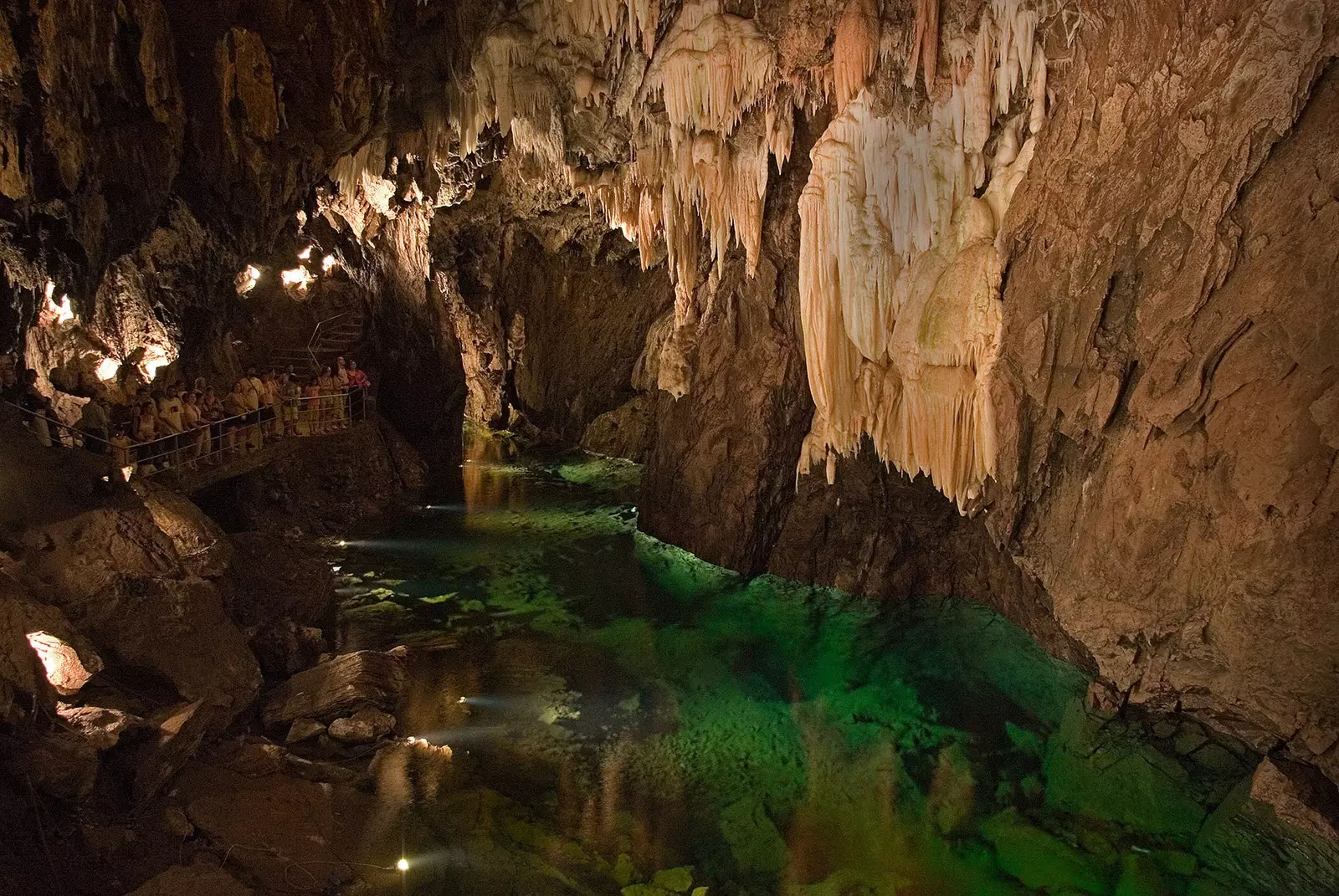
Inside the Cave of Wonders
Since then, the influx of tourists has been such that the current guides do not hesitate to state that the pandemic and its restrictions have meant a necessary rest period for a cave subjected to a danger excess of visits. Even wonders need, at some point, to breathe.
Aracena has, in addition to the castle and the Grotto of Wonders, the charm of the white villages, with squares decorated with ditches, steep stone streets and an African aroma that transports us for moments to the populations of the Maghreb.
In the plain of Huelva, the towns are wide, without fear of using the land to their advantage; in the mountains, each house seems to compete to get closer and closer to the castle which, without exception, crowns the highest point of each town. The shadow of the walls seems to be the only thing that protects us from the sun. And when we are closer to assuming that we are in the middle of a story from the Thousand and One Nights with an Andalusian accent, a waiter appears with a little cap of ham.
In the mountains of Huelva, the Iberian pig laughs at Islamic contempt and gorges itself on acorns among the vast holm oak forests that surround Jabugo, Aracena and Cortegana. Acorn-fed ham is the oil of these lands, isolated and forgotten due to its location far from any major city, with nothing more to offer the kings, governments and dictators who have governed our country than be the border with the Portuguese Algarve.
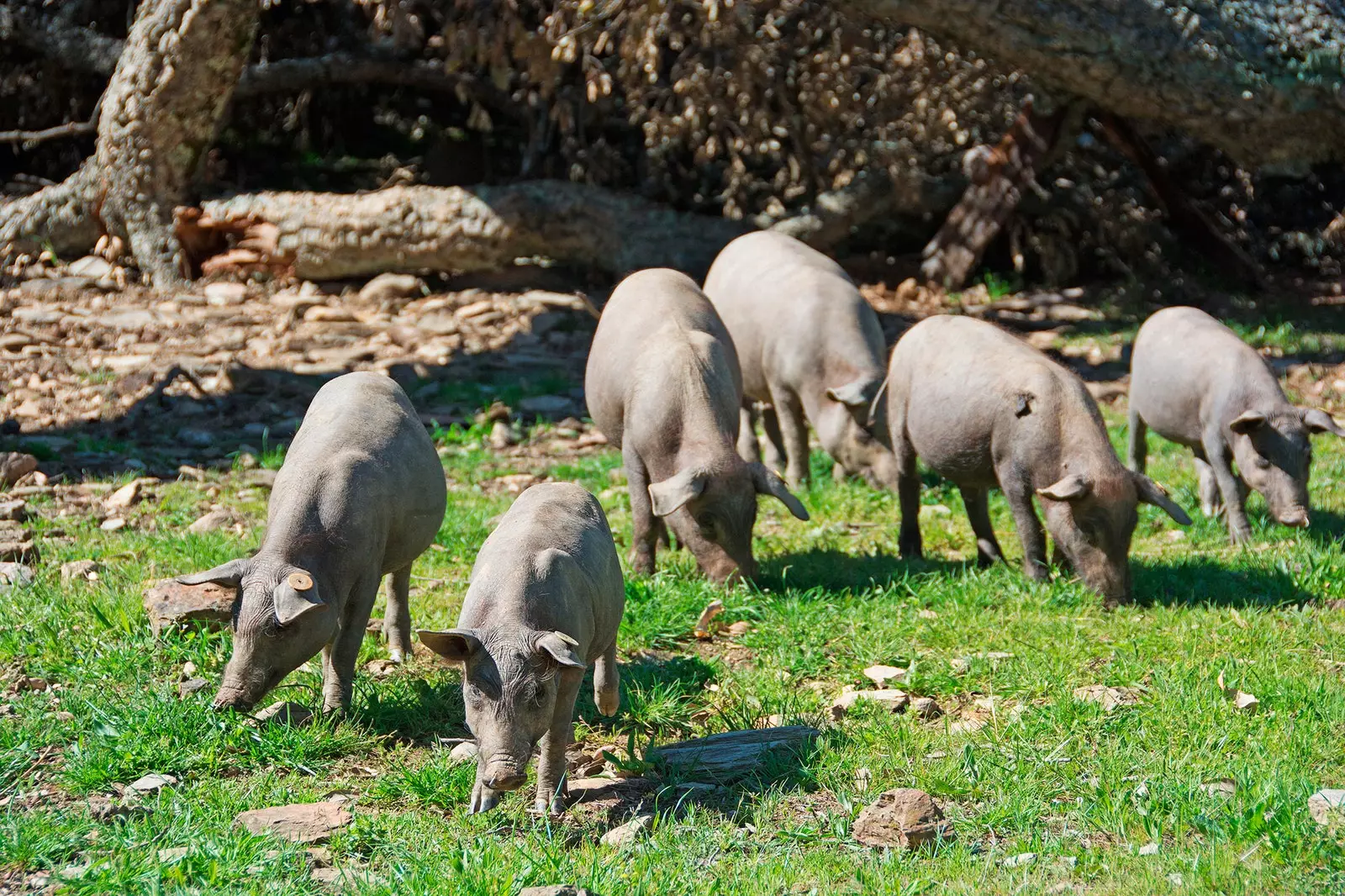
The Iberian pig gets fed up with acorns among the vast holm oak forests that surround Jabugo, Aracena and Cortegana
The Riotinto mines made Huelva rich, but the populations of the sierra had to look for their own beans as tourist retreat centers for aristocrats from Seville and Madrid longing for fresh air. The Iberian pig, oil production and the Sierra de Aracena Natural Park they are the banners of this land and, for our good and that of our palates, please continue to be so.
During our trip through the mountains we have verified that the earth can be dyed with spectral and poisonous colors, as happens in the Riotinto mines, or create stone art like the one shown in the depths of Aracena. The Sierra de Huelva also has value far from the ground, since its sky is wide, cloudless, ready to host the shine of the Andalusian sun as it is known in few places.
In Cortegana they know it, and their houses are piled up under the castle that gives them shade while waiters parade through the streets carrying the best pieces of the pig: prey, secret, feather... The cuttlefish and coquinas so typical of the coast are far away here: the predominance of meat is overwhelming when the visitor is looking for a lunch.
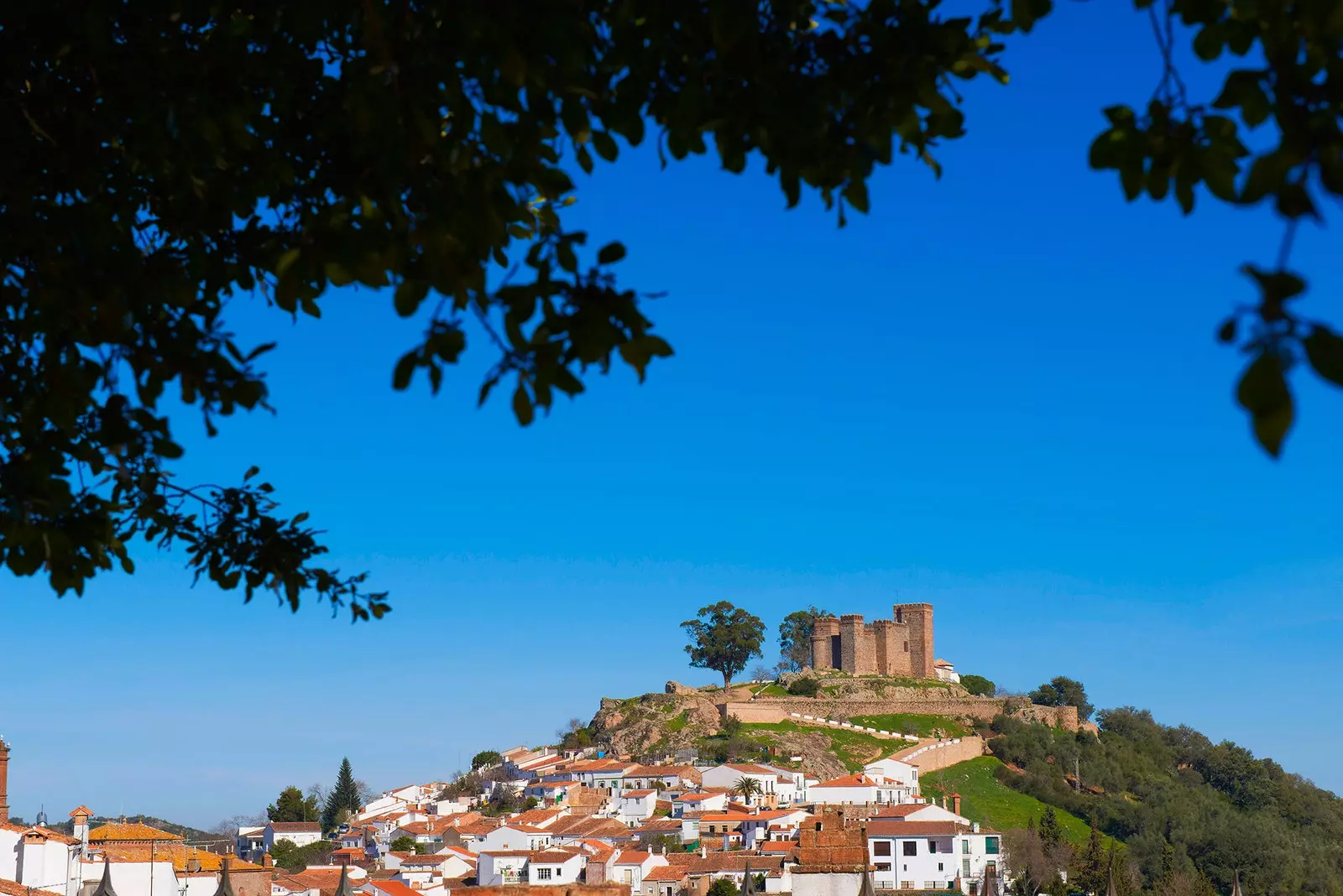
The houses of Cortegana are crowded under the castle that gives them shade
There are as many churches that adorn the mountain villages as there are lovers of the Iberian pig among its neighbors. For this reason, as you walk through Aracena or Cortegana, breathing pure air that smells of thyme and heather, the traveler may forget the reason for his trip: walk among the last embers of a past, Al-Andalus, which still breathes in the valleys of the Sierra de Huelva.
We were looking for a happy Arcadia where the most venal Spain still survived, and we have been fooled by the taste of the bacon, the sweet freshness of the wines and the beauty of the Grotto of Wonders.
In Almonastir the Royal, the dream will take shape again, transporting us back to the distant mountains of the African Atlas. The town is crowned by a citadel of Roman origin, inside which is hidden a mosque from the Caliphate period built on the remains of a Visigothic church. The history of our peninsula is concentrated in a small hill: As a climax, next to the mosque, stands a bullring, reminding us that five centuries ago the Muslims left. Luckily, the Sierra de Huelva is still here so we can't forget them.
